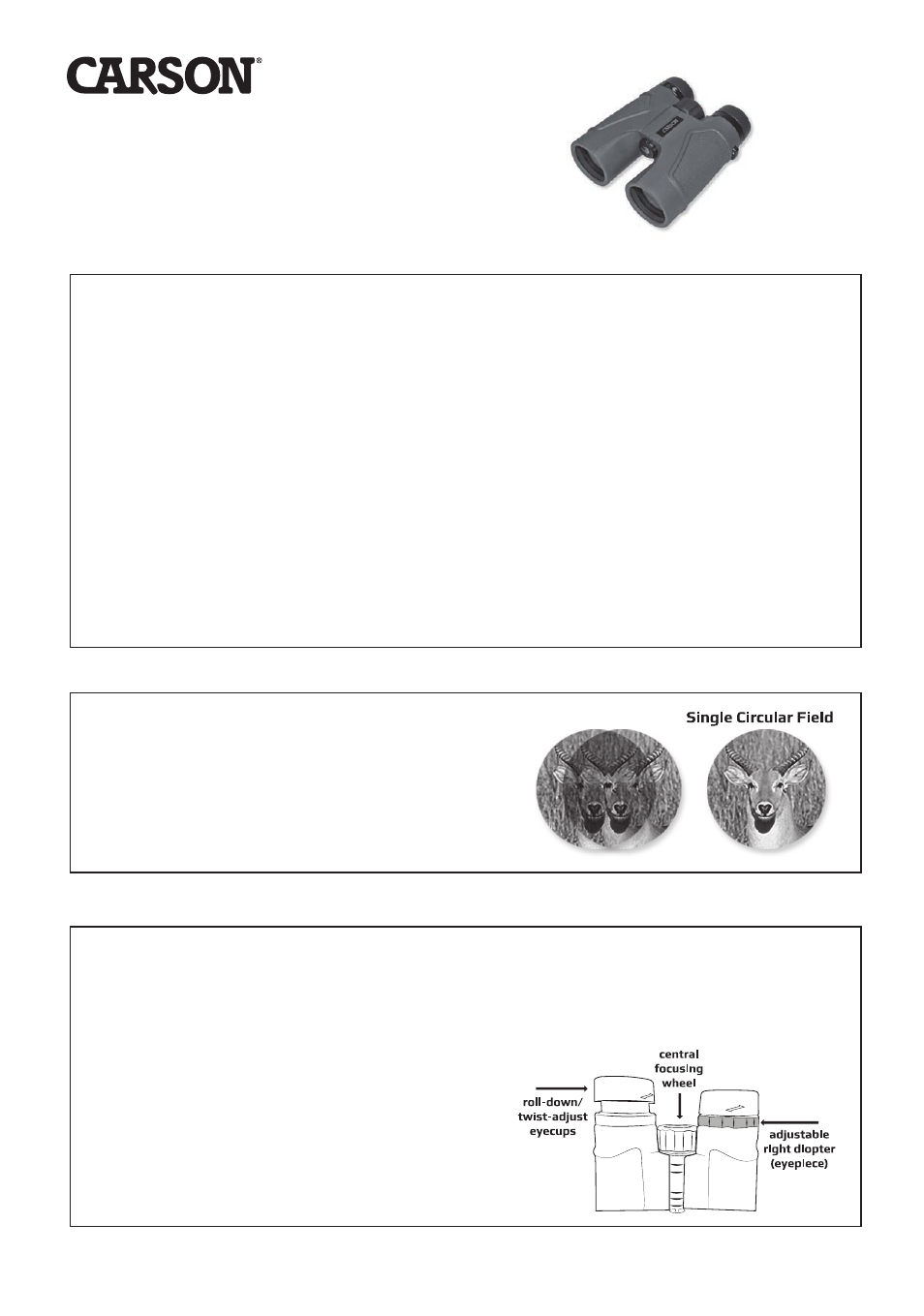Carson VP 10x42 Binoculars User Manual
Full size binoculars

Full Size Binoculars
Congratulations on selecting your new Carson Binocular! In order
to achieve optimum performance, please follow instructions for
proper use and care.
BASIC BINOCULAR TERMINOLOGY:
Binoculars
are commonly identified using 2 sets of numbers. The most common size is 8x21mm. The “8” is
the magnification and the “21” is the diameter of the objective lens in millimeters.
Magnification:
Typically, binoculars range from 5x to 12x power. A 5x binocular means that the image you see
through the binocular is 5 times larger than it would be when viewed with the naked eye. There are larger
power binoculars available, and most higher power binoculars are usually the variable type, also known as
zoom binoculars. A 20-80x zoom binocular, for instance, has a magnification range from 20 to 80 power.
Objective Lens:
The objective lens (front lens) diameter is listed in millimeters. The larger the lens, the more
light can enter the binocular and the brighter the image will be. However, binoculars with smaller lenses are
more compact and portable.
Field-of-View:
(Also known as FOV) is the total width of the viewing area through your binoculars from left to
right. It is often measured in feet at 1,000 yards. For instance, if you see “358 ft @ 1000 yards”, that means an
object that is 358’ wide and a thousand yards away will take up the entire viewing area of the binocular image
you see. Sometimes this measurement is listed in degrees and is referred to as Angle of View, i.e. 8° . To
convert to feet, multiply the number of degrees by 52.5 and you will get the FOV. Example: If Angle of View is
8°, Field of View is 8 x 52.5 = 420’ @ 1,000 yds.
EYE ADJUSTMENTS: HOW TO ADJUST FOR DISTANCE BETWEEN THE EYES
The distance between the eyes, interpupillary distance,
varies from person to person. To achieve perfect alignment
of lens to eye:
1. Hold binoculars in normal viewing position.
2. Rotate barrels closer or farther apart until you see
a single circular field.
INDIVIDUALLY ESTABLISHING LEFT/RIGHT EYE FOCUS:
Most binoculars have a center focus wheel and an independent right diopter eyepiece to account for small
differences in the strength of each eye. Please follow the steps below to focus properly:
1. Eyecups should be fully extended if you don’t wear glasses. If you wear glasses, twist/roll down
eyecups to bring your eyes closer to the binocular lens.
2. With right eye closed, rotate the central focusing wheel until the image
in the left eyepiece is sharp.
3. With left eye closed, rotate the adjustable right diopter eyepiece
until the image is sharp.
4. Image should now be focused to your individual eye
strength and will retain setting for future use.
Note: If you still cannot focus, rotate adjustable right
diopter to reset by lining up symbols (triangle, line, circle, etc.)
on diopter eyepiece and barrel. Then repeat Focusing Steps 2 and 3.
1
